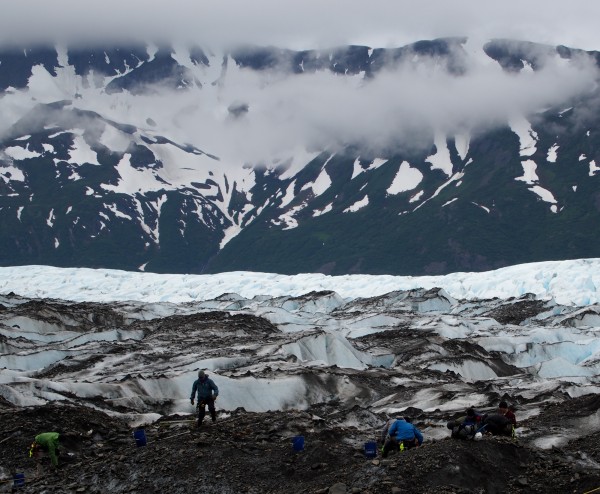
On Monday, the military resumed an annual mission to the Colony Glacier, where an Air Force plane crashed 65 years ago, killing the dozens of service members on board. In the days after, searchers spotted the wreckage, but a recovery was deemed too dangerous and the plane disappeared beneath the snow and ice.
The remains were buried for decades, undiscovered until an Alaska National Guard crew spotted the wreckage during a training mission in 2012. Since then, there’s been a yearly recovery effort.
Army Major Stephen Magennis is the officer in charge of coordinating logistics this season for Operation Colony Glacier.
“Specifically, what we’re doing here on the glacier is obviously recovery,” Magennis said in a phone interview. The primary focus for the operation is keeping team members safe. “Second would be the repatriation of remains. And then third would be being good stewards of the environment, so as best we can cleaning up the parts and pieces of the wreckage that does present itself up on the glacier.”
The operation is as unique as it is challenging. It involves cooperation between an array of military teams, from daily helicopter transports from the National Guard to guidance from Air Force morticians based out of Delaware.
After decades in the shifting landscape, many of the service-members can be identified only through small amounts of organic matter and bone fragments tested for DNA matches. The ultimate length of the operation will be determined by how weather and the movements of the glacial terrain affect recovery efforts.
“We’re up to 37 members that have been identified,” Magennis said. A total of 52 personnel were on board the plane when it crashed. “There are still 15 that are left unidentified.”
Earlier this season, searchers also spotted a large section of plane debris on an upper section of the glacier, which could extend the operation by a few more years as they clean up the area.
The mission window is short, lasting just about a month. But there’s also a no-fly zone set up around the recovery sight from May all the way through October. That’s in part to keep away sight-seeing aircraft and potential boaters after an incident earlier this spring. According to Magennis, it happened while the National Guard was conducting a training flight over the popular Lake George area.
“There were actually some folks that were down on the glacier, they were doing some sort of filming,” Magennis said. “We had heard it was a reality show, but don’t know the exact specifics of it.”
“For us that was a bit of a red flag,” he continued. “They might not have understood that that’s what we consider to be hallowed ground, with the remains of U.S. service members in that area.”
The operation on Colony Glacier is set to last through June 30th.
Zachariah Hughes reports on city & state politics, arts & culture, drugs, and military affairs in Anchorage and South Central Alaska.
@ZachHughesAK About Zachariah




